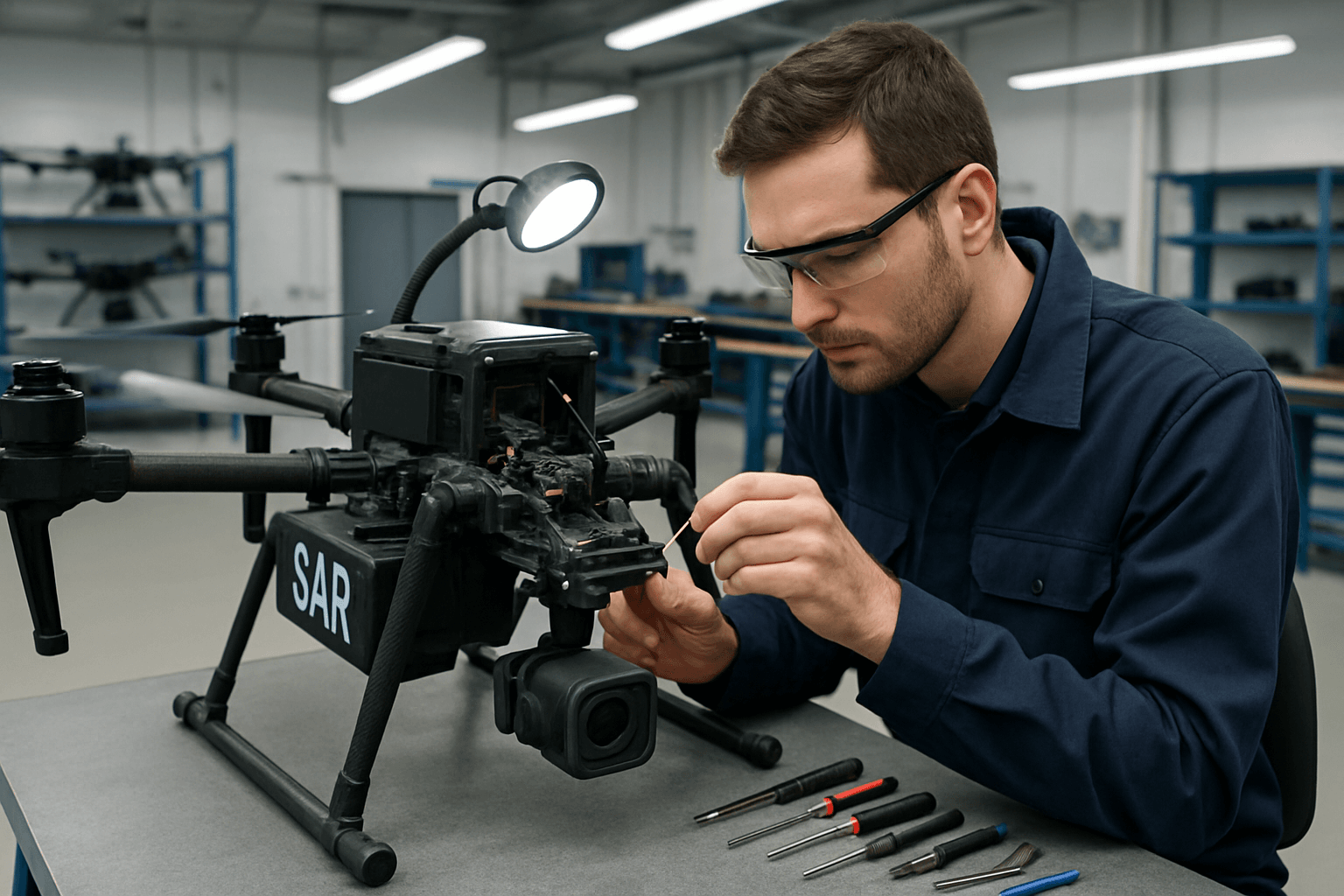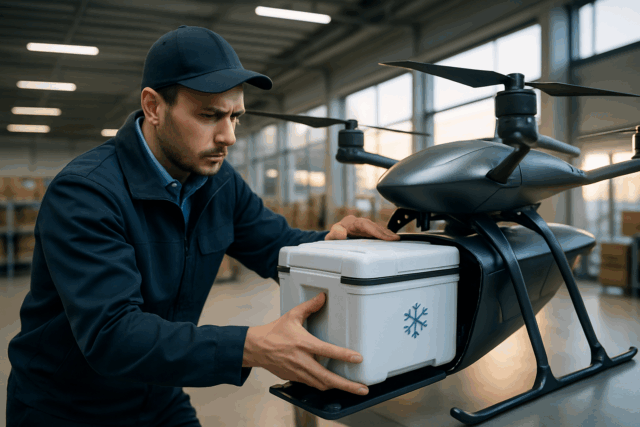Search and Rescue (SAR) drones have become indispensable tools, offering unparalleled speed, precision, and adaptability in critical situations where every second counts. Unlike traditional manned aircraft, drones offer a cost-effective solution for covering vast or hazardous areas, extending the reach of rescue efforts beyond human limits. To ensure these vital assets remain mission-ready for years, a comprehensive long-term maintenance strategy is paramount. This goes beyond routine checks, encompassing a holistic approach to hardware, software, and regulatory compliance.
The Imperative of Long-Term Maintenance
For any commercial drone operator, particularly in high-stakes fields like SAR, regular and long-term maintenance is crucial for operational efficiency, safety, and prolonging equipment lifespan. Neglecting maintenance can lead to equipment failures, increased repair costs, and potentially jeopardize mission timelines. A proactive approach, focusing on preventive maintenance, helps identify and address issues before they escalate, maximizing performance and extending the drone’s operational life.
Key Components of SAR Drone Maintenance
Long-term maintenance for SAR drones involves a multi-faceted approach, addressing various critical components and systems.
Airframe and Physical Integrity
SAR drones often operate in demanding and hazardous environments, including extreme temperatures, rain, snow, and dense foliage, making their durability and weather resistance paramount. Regular inspections of the airframe, propellers, landing gear, and attached accessories are essential to identify any signs of damage, wear, or loose components. This includes checking for cracks, dents, and ensuring all parts are securely attached. Cleaning the drone, including removing dirt, dust, or debris, is also a routine post-flight task.
Hard landings are a common cause of unscheduled maintenance for unmanned aircraft, necessitating inspection for impacts and handling damage.
Battery Health and Management
Batteries are the core power source for drones, and their proper care is critical for maximizing flight times, ensuring reliable performance, and extending longevity. LiPo (Lithium Polymer) and Li-ion (Lithium-ion) batteries are common in commercial drones, and proper maintenance is crucial for optimal performance.
Key long-term battery maintenance considerations include:
- Charging and Discharging: Adhering to manufacturer guidelines for charging and discharging is vital. This means avoiding both overcharging and completely depleting batteries, as these practices can significantly reduce their lifespan and efficiency. Some systems allow setting auto-discharge cycles to maintain optimal charge levels for storage.
- Storage: Batteries should be stored in a cool, dry place, away from extreme temperatures and direct sunlight, ideally at a charge level of 40-60% for extended periods. It’s also advisable to store them in fire-safe containers.
- Inspection: Regular inspection for signs of damage, swelling, corrosion, or leaks is crucial. Any compromised batteries should be replaced immediately as they pose safety hazards and can decrease flight performance.
- Cycle Tracking: Labeling batteries with purchase dates and tracking their charge cycles can help balance usage and identify when they are nearing the end of their useful life.
- In-Field Charging: For long-term deployments, SAR teams often need to charge batteries in the field using vehicle charging systems or generators to maintain continuous flight time.
Predictive maintenance using machine learning is an emerging area that can help predict when batteries will fail, allowing for proactive replacement and avoiding costly downtime.
Payload and Sensor Care
SAR drones are equipped with specialized payloads like high-resolution cameras, thermal imaging sensors, infrared sensors, LiDAR systems, and even communication relays. The accuracy and reliability of these sensors are paramount for effective search operations.
Long-term maintenance considerations for payloads include:
- Cleaning: Keeping camera lenses and sensors clean and free from debris is essential for clear and accurate data capture. Microfiber cloths and lens cleaner are recommended for delicate areas.
- Calibration: Regular calibration of sensors, such as compass, gyroscope, and accelerometer, is crucial for accurate flight, stability, and precise data collection. This ensures the drone’s flight controller receives accurate information for stable and controlled flight. Advanced SAR systems, like Synthetic Aperture Radar (SAR) sensors, also require meticulous radiometric calibration to ensure data accuracy and comparability.
- Integration: Poor integration of payloads can affect a drone’s flight performance and stability due to uneven weight distribution.
- Software Updates: Payloads often have their own firmware and software that require updates to enhance performance, resolve bugs, and improve safety.
Software and Firmware Updates
Keeping the drone’s software and firmware up to date is critical for optimal performance, enhanced features, and flight safety. Manufacturers frequently release updates that can improve navigation, optimize flight efficiency, and introduce new capabilities relevant to SAR operations, such as improved mapping algorithms or thermal image support. Regular checks and installation of these updates are an integral part of long-term maintenance.
Record-Keeping and Regulatory Compliance
Maintaining accurate and detailed records of all drone maintenance activities is crucial for ensuring regulatory compliance, enhancing safety, and improving overall reliability. Each region may have specific maintenance standards that operators must adhere to to avoid fines or penalties.
Best practices for long-term record-keeping include:
- Accuracy and Detail: Meticulous records help track maintenance history, identify trends, and ensure compliance.
- Standardized Procedures: Using standardized forms and templates, training personnel, and implementing quality control checks can minimize errors.
- Storage and Organization: Records should be stored in an organized and accessible manner, whether paper-based or digital.
- Regulatory Frameworks: Adopting robust compliance frameworks, such as ISO 27001 for information security and ISO 9001 for quality management, can help manage maintenance records, pilot certifications, flight logs, and incident reports.
- Continuous Monitoring: Regular reviews and audits of records help ensure ongoing adherence to regulations and best practices.
Navigating regulatory requirements, such as FAA Part 107 in the US or EASA regulations in Europe, is a continuous process that impacts maintenance protocols and operational procedures.
Establishing a Comprehensive Maintenance Schedule
Implementing a robust maintenance schedule is essential for the long-term viability of SAR drone fleets. This typically involves:
- Pre-flight Checks: Thorough inspections before every flight, including physical condition, battery charge, controller functionality, and clean sensors.
- Post-flight Inspections: Tasks performed after each flight to identify wear and tear, physical damage, and assess battery performance.
- Routine Scheduled Maintenance: Regular checks and servicing at predetermined intervals (e.g., after a certain number of flight hours) to address potential issues before they escalate.
- Emergency Maintenance: Addressing unforeseen issues or failures that occur despite preventive and ongoing efforts. While necessary, the goal of long-term maintenance is to minimize the need for emergency repairs through proactive measures.
By prioritizing long-term maintenance, SAR drone operators can ensure their unmanned aerial systems remain effective, reliable, and compliant, ready to respond to emergencies and save lives whenever called upon.





